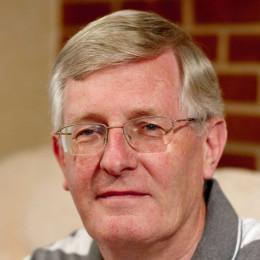






































We like to think of ourselves, essentially, as an aspect of photography, and perhaps treat the sound track as secondary. This was brought home to me, yet again, at the inaugural Smethwick National AV Competition, where some otherwise excellent AVs were let down by less effective sound. It wasn’t the case for the very well-deserved winner, “Safe” by Judith Kimber (report in the next issue of AV News) who, as I’m sure most of you will realise, is so capable that she writes and performs the music for her productions. However most of us tend to rely on commercial music and selfrecorded narration. Some are better than others at narration, but I was impressed at a recent talk by John Smith about how he made the intro sequence for the Great Northern. In addition to the elaborate graphics, he used computer generated voices throughout the production, and being John (short arms, deep pockets), he found a free service, called ‘Vocalware’. (www.vocalware.com/index/demo ). With a good selection of voices, the software converts your typed text straight into the spoken word. There’s a free demo available and it’s also great fun, even if you don’t use it for an AV. Others, unhappy with their own voices, have used a service called Fiverr (www.�verr.com ). In this case, professional voice-over artists will narrate your text, often at a very inexpensive rate (some will do 50 words for just over £4 –i.e. $5, hence the name).
As for music, most have the IAC licences which allow us to use commercial music in our productions, though with signi�cant limitations on how and where we show the AV. Along with several other AV producers, I have tried using royalty-free music.
There are a number of useful sources on the internet, though I have found one site, ‘Incompetech’ (www.incompetech.com/music/royalty-free/ ), particularly fruitful. All the music on the site has been composed and performed by Kevin MacLeod and is indexed on the site either alphabetically or by genres. You may �nd you can use a complete track; I think that Alan Tyrer did this for “The Gallery”, or you can piece together sections to suit, which I did for “Kelpies”. Of course, other free royalty-free music is available on line, or can be bought from �rms such as AKM Music and Beckham Digital. Just remember that, unlike the IAC licences, you will probably have to credit the music somewhere in your production.
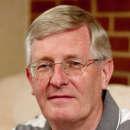
The RPS will be holding an assessment of Multimedia work, which includes all forms of AV and �lm, in order to award distinctions at ‘L’, ‘A’ and ‘F’ levels.
This will be held at the new RPS House in Bristol on 4th November 2019. The work will be assessed in the auditorium using the new 4K projector and professional sound system.
Note that you do not need to, and should not, make your AVs at 4K, stick to a maximum of HD to ensure they play correctly.
The current assessment panel comprises Peter Hayes FRPS (Chair), Richard Brown FRPS, Ian Bateman FRPS, Martin Fry FRPS, Edgar Gibbs FRPS, Sheila Haycox ARPS and Howard Bagshaw ARPS.
The guidelines on all the distinctions can be downloaded from http://rps.org/ ~/media/Files/Distinctions/FRPS%20Guidelines.ashx
Details of the assessment, how and where to apply, are at http://rps.org/ events/2019/november/04/multimedia-assessment
To assist and advise applicants about the process and standards, we will be holding a Multimedia Distinctions Advisory Day on 25th May 2019. This is being held at the Old Schoolhouse, Oldbury, from 10:00 – 16:00.
This is an opportunity to bring multimedia/AV work for advice on its suitability and standard for an RPS Distinction. The process and requirements for submitting work will be addressed and examples of previously successful AVs/�lms will be shown. The main opportunity, however, will be to show your work to members of the Multimedia distinctions panel for their comments. Panel members will include Richard Brown FRPS and Howard Bagshaw ARPS. You can bring along a complete set of work which you are thinking of submitting, or an example or two to gain some idea of where this work stands in relation to the standards of the different RPS Distinctions.
We also welcome observers, who want to better understand the process of gaining a distinction and want to see what is expected for the different levels of distinction.
Please apply to attend the day, either as a observer or potential applicant, either by applying on the RPS website rps.org/events/2019/may/25/ multimedia-advisory-day , or email howard.bagshaw@ntlworld.com
The RPS National Audio Visual Championship will be held this year on Saturday 5th and Sunday 6th October 2019.
The Championship will be held at Leeds Trinity University (LS18 5HD), a compact university, outside and north-west of Leeds city centre, offering easy parking and a modern and comfortable auditorium with refreshment facilities. There are a number of hotels nearby, as well as Leeds/Bradford Airport (should you wish to �y up). The nearest hotel is the Premier Leeds/Bradford Airport Hotel. As has happened at the previous Nationals and Internationals, attendees are expected to make their own accommodation arrangements.
We anticipate plenty of entries, though we will try to avoid pre-selection if at all possible. We estimate that we will start on Saturday at around 10:00am and run through until around 5:30pm. As in the past, the RPS AV Group AGM will be held on Saturday, starting at 6:00pm. We are hoping to have a Championships dinner on Saturday in a local restaurant, hopefully on the same basis as previously, i.e. we will need to know numbers beforehand, but you will be able to choose your meal on the night.
Sunday projection will start at 10:00am and run through until mid -afternoon, followed by judging and presentation of awards. We would hope to �nish by around 5:00pm
Our judges for this Championships are Keith Leedham (England), Bryan Stubbs (Yorkshire) and Jill K Bunting (Wales), who I'm sure you'll agree, will form an experienced and excellent jury.

Closing date for entries will be September 15 th and we hope to use the same systems as we used for the last NAVC, so you can enter and/or book to attend online if you wish. But we'll also take postal entries and bookings if you want.
Keep up to date with the event by looking at the website: www.rps.org/navc


Editing AV News can be something of a “Song and Dance” but it all comes together in the end and on this occasion I am delighted with the outcome. The words “Song and Dance” sum up this edition very well with two articles with this theme. Graham Sergeant provided me with some of the original images from his FRPS panel which he then went on to use in his successful AV The Dance Goes On. Melanie Chalk won this years East Anglia AV Competition with he AV Just Dance and has provided me with an interesting article and some lovely images. I hope you enjoy these.
You will also observe some presentational changes to AV News. Andrew Gagg has been a great help here and through his article, Finding my Voice you will see the direction we are taking the journal. I hope you like it. I am reminded that primarily, we are photographers, and even though some of our purist brethren don’t always appreciate that AV photography needs a different approach to help tell the story, I am planning to use AV News more and more to illustrate our wonderful art form. Do please keep sending me your photographs and articles. Don’t be scared of sharing your story; what inspired you; and what you did as photographer.
I haven't been to the new RPS head quarters in Bristol yet but look forward to a visit there at some point soon. The next round of RPS Distinctions in Multi Media might be a good opportunity and I look forward to viewing these in the new auditorium (pictured below). I hope to see you there.


Contact the editor at: magazine@avnews.org.uk
Does anyone know a J D L Evans and if so, could they please let the Treasurer know (details Page 1) on how to make contact or ask the person to get in touch directly. Thank you.
 A report from David Whenham with photographs from John Smith
A report from David Whenham with photographs from John Smith
The RPS Great Yorkshire AV Day organised by the Leeds AV Group is always well worth attending and the event on 7th April was no exception. The tried and tested format of attendees sequences in the morning and a guest speaker after lunch proved a winner again and all of us who attended were treated to a fascinating, some might say eclectic, range of subjects and styles. I’ve attended a few of these now over the last couple of years and always come away from the day inspired and with my head buzzing with ideas.
We saw 15 attendee sequences in total which ranged from an old analogue sequence that had been digitised recently to a fully animated piece. The journey was via travelogues, abstracts and some lovely photo harmony sequences.
Humorous sequences always go down well and we saw some good examples including one narrated purely from a dog’s perspective. An inventive GCHQ spoof featuring well known faces from the national AV scene raised a smile as did a lovely piece of Christmas fun with a surprise twist at the end.
One of the most interesting parts of the morning for me is always the comments made on each piece after it has been shown. For the newcomer to AV this is a chance to listen, learn and also consider some opposing points of view. Padley Gorge in Autumn generated a lot of discussion, some of it contradictory, and as always the author is free to consider or ignore the advice as they see �t. I’m always encouraged by the generous spirit in which feedback is given with positive observations always offered to balance any constructive criticism. I’d recommend anyone interested in creating an AV sequence to take the time to attend one of these sessions.
After the usual excellent buffet lunch we were treated to another dozen or so sequences this time from guest speaker Alan Tyrer (pictured right) who is also a regular attendee at these AV Days. Perched on a stool a la Dave Allen (that dates me!) his dry sense of humour and self-deprecating style were well appreciated by the audience.
Mention must also be made of Bev “I’m not your mother” Tyrer , Alan’s (longsuffering) wife, who works on many of the sequences with Alan. Alan creates AVs for pleasure and this pleasure was evident in the variety of sequences we saw. Someone had suggested having his notes on his phone might help to prompt him as he gave his talk but his amusing struggles with the technology really set the tone for an entertaining and fun-�lled afternoon. I won’t single out one sequence to mention but through the entire afternoon one theme was ever present as an undercurrent to Alan’s presentation – just get out there and do it!



So, my advice to anyone looking for an entertaining and immensely enjoyable day out is to look no further than the RPS Great Yorkshire AV Day. If you have an interest in AV or aspirations to produce your own then it is a wonderful chance to gain some inspiration, see some �rst class sequences and discuss the merits or otherwise with a group of knowledgeable and friendly folk.
Twere a Grand Day Out indeed!

Below: Master of Ceremonies Bryan Stubbs and an appreciative audience




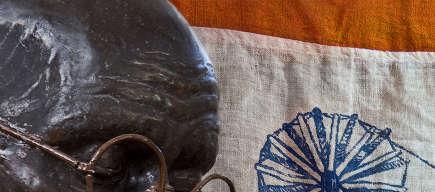


“He sounded perfect but when he recorded my script it was totally lacking in warmth and nuance”
Christine asked “When are you going to do an AV with all that Indian stuff? You have thousands of pictures, just sitting there” (This is not strictly true, as they have served to illustrate my cruise and other talks fairly lavishly over the years.) “Yet another travelogue?” said I “No, there are plenty of those on offer. I’ll give it some thought…”

The result was a complicated thing about the signi�cance of wheels in India – spiritual, commercial and practical. It was intentionally not a narrative – more a series of observations –an uncommon format in Western culture. The nearest parallel I could think of was a ‘sutra’. (the most famous of these is of course the Kama Sutra, which isn’t just an erotic handbook, but a very profound exploration of the arts of courtship and love.)
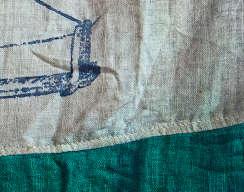


All well and good, but it had to have a voice, an Indian-sounding voice. Whose? Not me, that’s for sure, although I do love doing my own voiceovers!

Via a whole string of contacts I ended up corresponding with a chap at Birmingham City University, who said he knew someone, and furthermore he would mobilise his students to do the recording as a project, complete with sound studio facilities. The students came and talked it through. After a few emails from them, nothing further happened.
Next someone suggested Fiverr. That’s an on-line facility that �nds people to do various small jobs – including audio-typing, graphic design and voiceovers. I found this guy who sounded perfect, with a rich dark Indian voice. But his sample piece was very much the kind of thing you hear in an Indian TV commercial, and when he recorded my script it was totally lacking in warmth and nuance. I paid him off and searched again. Another chap from Fiverr was full of enthusiasm, but he couldn’t cut it either. He offered to do it again for free, following my dummy recording of how it should sound. Still no good!
I’d attended some excellent talks on �lm and video technique, and the teacher suggested ‘Shooting People’ – another web-based organisation that brings together young professionals, wannabees and serious amateurs from all aspects of movie-making, keen to show their talents for little more than expenses and a credit.
I quickly had a response from a professional actor who seemed keen to help. He would be working in Birmingham (on a well-known soap as I recall) and could come to Worcester to do a quick recording. He did a dummy run of my script on his ‘phone, which sounded absolutely ideal, though certainly not good enough technically.
The weeks went by, and I heard nothing more from him – obviously a busy fellow! Slowly it dawned that he was too busy to do my �ve minutes of voiceover. Another blow.


Next a doctor acquaintance of one of Christine’s ex-colleagues undertook to have a go. A stunningly glamorous lady arrived at our friend’s house, and she tackled the recording with great con�dence. The result was certainly not lacking in clarity – she sounded “as if she were addressing a public meeting” (as I believe Queen Victoria once said of Gladstone.)
We were soon due to return yet again to India, so I took my script with me, in the hope that we would �nd someone there. India is full of Indian-sounding people after all!
I made three different versions of the v/o there, with three different guides and drivers – one of them an old friend from a previous trip. All were wellspoken but not able to deliver my words with �uency and meaning. It cost me thousands of rupees in thankyous.



Finally, I came to accept the truth of the saying “ If you want a job done properly, do it yourself. ”

Back home I tried again, making a trip to London especially to record one of the staff at the TransIndus of�ce – they’ve made the travel arrangements for our Indian trips for many years. Still not right – lacking in expression.
Without more ado, I settled down early one morning in my usual comfy recording set-up, took out my teeth (for the second time in the cause of art and artistry) and, trying to sound more like the Mahatma Gandhi and not too much like Peter Sellers, I recorded the whole damn thing myself.
The resulting voice-over was maybe not quite as authentic as I would have liked, but at least I spoke the words on which I had lavished so much care in the way I wanted them to be heard, and my efforts were not entirely in vain – on its �rst outing it received a Highly Commended from the three generous and sympathetic judges.

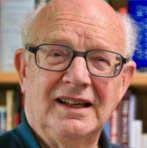


I�rst met Elizabeth Twistington Higgins in 1976. Until the age of thirty she had enjoyed a career on the London stage as a classical ballet dancer, when Paralytic Polio struck her down in 1953. Ironically this was only months before the famous Sal vaccine virtually wiped out Polio in most Western societies.
The onset of Paralytic Polio meant that Elizabeth was con�ned to wheelchair living; at home during the day and in an Iron Lung to support her breathing every night for the rest of her life. This involved a nightly trip to the local Broom�eld hospital in Chelmsford.









Through a mutual friend I was commissioned to photograph her life for the autobiography she was writing. I set about the job armed with many rolls of 35mm Kodak Tri-ex and a Leica M4. At that time I lived in Barnet, within reasonable distance of Chelmsford, so I was able to travel on a regular basis to cover the wide variety of activities that Elizabeth had engaged in after contracting Polio.

As I got to know this amazing woman, I felt that I would like to record her story, so on a number of occasions I took my portable reel to reel Nagra IVs sound recorder on visits to Chelmsford. Having suffered such a sudden and devastating onset of Polio and its disastrous effects on her original career, I asked how she had coped. Her reply: “Ballet … the discipline of Ballet”

Fast forward to 2008 when I dusted off the sheets of negatives shot in 1976 and I submitted Elizabeth's story as a print panel to the RPS for which I was awarded a Fellowship. This was several years before I took up AV seriously in 2012. Giving myself a couple of years to learn the basics of Pictures to Exe and now looking around for ideas and potential projects, I remembered Elizabeth from the 1970s.
All photographs courtesy Graham Sergeant FRPS















My decision to record an interview with her all those years before was to pay dividends. She died in 1990, but having shot the visuals together with sound, I was in a good position to produce the very human story of this remarkable woman. For sometime I had felt that in many ways her story was more appropriate for an AV than a panel of prints. Having also recorded her voice gave me the opportunity to build an authentic narration.

Sifting through the black and white darkroom prints brought back so many memories and special events that I had photographed. Among them was a performance by Elizabeth's Company of Dancers at both the new Coventry Cathedral and in the ruins of the old building (pictured below).


I had also photographed her at work teaching in her studio at home. Another highlight (above) was to have photographed her doing “mouth painting” at a specially made easel designed and built by one of her neighbours.
Perhaps one of the most memorable events was Elizabeth and “her girls” at a performance in Chelmsford maximum security prison housing “lifers”. Prior to the performance, Elizabeth had to be carried up a staircase in her wheelchair and into the prison Chapel.
One of the volunteers to lift her was none other than Charlie Kray, the brother of Reggie and Ronnie, the infamous East London gangsters.
There was a “full house” of prisoner in the prison Chapel for the event and some of us in Elizabeth's team wondered what the response would be of “women-starved” lifers to the band of very attractive young dancers; cat calls and wolf whistles, we thought would be the very least of our problems. There could be a riot! In the event, you could have heard the proverbial pin drop and to a man, the inmates behaved perfectly.
In fact after the performance, a number of them gathered around Elizabeth to chat to her. We thought that perhaps the men had the sobering thought that Elizabeth, like themselves, were in their different ways, all suffering a life sentence.
The lesson I learnt from this project was not only to “ carry a camera” but to have a sound recorder to hand; as we are all aware, you never know when and where a good story for an AV is going o crop up!
PS. I should have remembered that when I shot the material for Beeswing! (see AV News Issue 203, February 2016)
The Dance Goes On continued ...























The IAC Peter Coles International AV Competition has a very committed bunch of followers who attend the annual gathering at Capel Curig hosted so very well by Marion Waine and John Rowell with John Smith and Jill Bunting (together with a growing number of bears) acting as the technical team. The venue is cosy so attendance has to be limited to a small number. The short walk to the Tyn-y-Coed adds to the enjoyment.
The competition attracts around seventy to eighty entries from around the world with this years being seventy four. Starting after lunch on Saturday and running through to late afternoon on Sunday this is one of the few competitions with a Saturday evening session. Even the most die-hard of AV enthusiasts �nd this session something of a challenge (and especially so after a pint or two of best bitter to wash down supper at the pub next door. Just remind me not to next time!)
International entries are always interesting to watch, even if the language takes some translating. There was a strong number of Italian entries this time as well as the usual South African, Australian, Polish and French offerings. Both Northern Ireland and the Irish Republic were well represented together with entries from all four nations of the UK.
The full list of entries and winners can be found at www.nwawavg.org.uk
I enjoy attending AV Competitions to see what is trending. We have had a few years of World War One themed productions and the Concentration Camps from the World War Two continue to be a subject which authors interpret through their AV productions. In fact the overall winner from Ron Davies called Fragments of Memory and the best �rst time entrant Mark Allen with The End Of All Our Exploring both followed this theme.
An emerging subject for AV production appears to be dereliction with a number of productions using disused factories, schools, hospitals and other buildings being used as a backdrop to tell a story. If I am honest, I didn't quite understand the Italian offering which were rather too dark for my liking and in a couple of entries from the United States of America, the wonderful images had perhaps been subjected to a little too much HDR post processing.
The Runner-up was Tragedy Of Doolough by Margaret Finlay from the Irish Republic. This was the author's re�ection both past and present on the tragedy of the Irish Famine that occurred in the 1840s while taking part in a yearly Famine Walk in 2017. My own AV Beyond the Wall, a re�ection of the closed Shrewsbury Prison was third placed (making me the winning Englishman given that Ron is from Wales) .
Turn over for images from the winning AV productions.
Below Left: Competition Organisers John Rowell and Marion Waine
Below Middle: An international jury of Bears

Below Right: The Judges; Lillian Webb, Richard Brown and Graham Sergeant

One of the rewarding aspects of this competition is the opportunity to read a few words from the author by means of an introduction to the AV production. Some people don’t like writing much for fear of giving the game away, but on these pages, I wanted to show something of the thought process that goes into the AV.
Winner: Fragments of Memory by Ron Davies
Near Krakow Stefan Lewandowski is dying. No-one sits at his bedside. Fragments of memory �ood his mind.



What is the purpose of imprisonment? Does it work? Is it effective? What is it like to be a prisoner? Was the death penalty ever right?





Mark writes: “It was a 39th wedding anniversary surprise trip to Poland. My wife was interested in visiting Auschwitz, I really didn’t want to go. But after visiting the Oskar Schindler Museum, I relented. I found the audio tour at Auschwitz Birkenau camps to be too harrowing. As it was our anniversary I was in best behaviour mode and had left my camera behind. I only had my iPhone 6 and I took a few snaps.
Back home; I heard the music of Max Richter called 'The End Of All Our Exploring' and thought it was the saddest, yet most beautiful music I had ever come across. I immediately knew that my iPhone pics would work, in black and white, of course. But the project stalled as the music wasn't long enough and then I heard another piece of music that I knew would �t.
To my surprise, it was by the same author and was called 'And Know the Place For The First Time'. The titles of both tracks come from the TS Eliott poem. “We shall not cease from exploration. And the end of all our exploring. Will be to arrive where we started. And know the place for the �rst time.”

When the last of earth left to discover Is that which was the beginning; At the source of the longest river

The voice of the hidden waterfall
And the children in the apple-tree
Not known, because not looked for But heard, half-heard, in the stillness Between two waves of the sea.”
T.S. Eliot, Four Quartets
On the Sunday Morning, we woke up to snow-capped mountains. Some local roads were blocked. If ever you are going to be marooned, Capel Curig with a bunch of AV enthusiasts wouldn't be a bad place! Photograph courtesy Howard Bagshaw.


Waves was formed in 1996 and is based at Trowbridge, Wiltshire. We encourage and promote the understanding, study and practice of the art of Audio-Visual Sequences and have a varied programme of activities including presentations by guest speakers in sound, vision, scriptwriting, Pictures to Exe and demonstration of new technologies. We have theme days and also presentation and demos by members.
AVs in the West Country are becoming more popular and we are gradually increasing our membership but would welcome more. We meet four times a year, February, May, August and November and some of forthcoming events are not to be missed! Anyone welcome, we have members from as far as Plymouth, Salisbury, Wantage, Wales, Bristol and Exeter so do not let the distance put you off.
At our last meeting we had a Members’ Challenge where we were given 30 images which were all totally unrelated and members had to produce an AV of no more than 2 mins long but could alter, crop, adjust the images in anyway they wished. It was amazing how different and inspiring the sequences were, photo harmony, poems, stories. A excellent day �nishing off with members sequences for critique.
On August 10th we will be entertained by Richard Brown FRPS FIPF FACI(M) EFIAP APAGB who will show his work and hopefully instil a few hints and tips on how he manages to be such a success. Members are also invited to show their sequences on which Richard will comment.

November 9th Ian Bateman FRPS MPAGB APAGB AV-AFIAP will present his work to the membership with a potted history!! As is usual with Ian he will keep the audience entertained with ideas and thoughts on his AVs. Members will also be invited to show their sequences for critique from Ian.

Malcolm Imhoff FRPS FACI(M) will be giving a presentation in November 2020 where he will focus on choosing and using sound for AV. Members will also be invited to show their sequences for critique from Malcolm. Please visit www.waves.co.uk for more information.

It is three years in a row for Ian Bateman at the annual Bridgend Camera Club “5 to 8” AV Competition. With Cathedral in 2019, Going Underground in 2018 and The Fallen in 2017. This builds on Ian's previous successes of runner up and highly commended all the way back to 2013.



The Bridgend "5 to 8" competition is an annual photo harmony competition organised by Bridgend and District Camera Club and open to entries from across the globe. You can see all the “5 to 8”winners and download �les from: www.bridgendcameraclub.co.uk/5to8Comp_Results.html


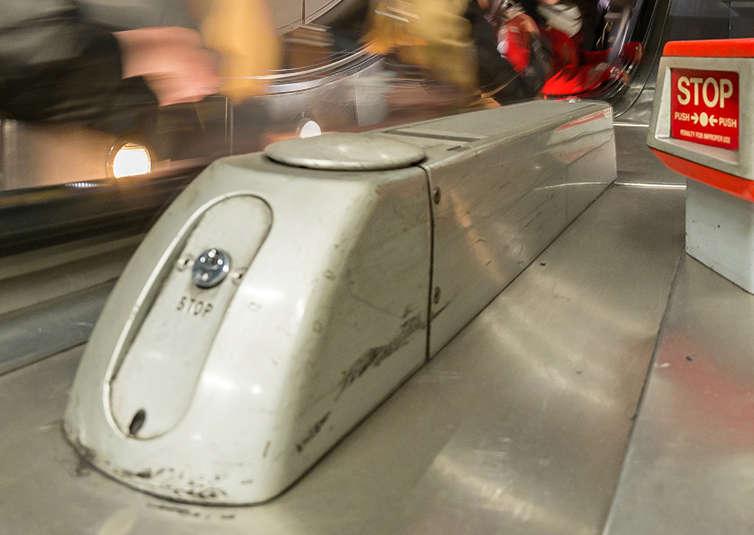


The NIPA AV Festival got underway in The Courtyard Theatre Ballyearl on Friday 22nd February and we were delighted to welcome Ian Bateman back as the judge. This was Ian’s �rst visit since 2006.
As usual the festival opens on Friday night with the judge showing their own work. We were treated to a wonderful collection of Ian’s AVs. It is always a treat for us out on the fringes to see top quality sequences.
Saturday is competition day and Ian had busy morning and afternoon sessions judging 34 sequences. There is the Open Competition restricted to NIPA Club members with a Novice section. This year a separate Photo Harmony Competition was introduced as opposed to previous years when it was a special award within the main competition.
We also compete in an All-Ireland Competition which allows for our friends from the Irish Photographic Federation in the Republic of Ireland to compete with the members of NIPA. Ian made constructive comments after each sequence which were appreciated by the authors present. Who says we don’t work our judges hard?
It was pleasing to see four new Novice entries, all �rst-time entrants. One entry was titled Cymru which I’m sure was not an attempt to in�uence Ian. But The Traveller by Brendan Gillan took the Novice award. It is an imaginative interpretation of a poem using a number of miniature �gures progressing through everyday objects.
The Photo Harmony section saw a variety of interpretations of the genre with landscape, colour blending, and the life cycle of Sun�owers amongst the offerings. The winner was a complete sequence lasting several minutes from apparently one image of an Iris �ower using the computer to take it through continually changing Kaleidoscope type images that �nish with the Iris �ower.
In the main NIPA ‘Open Championship’ Raymond Hughes’ sequence His Wonders to Perform., the story of John Newton, writer of Amazing Grace, was awarded the PAGB Bronze medal. Between Sea and Sky, a sequence on the Faroe Islands by James Hamill won Silver.
In the All-Ireland competition Shangri -La was judged the winner. This is a story by Liam Haines AIPF (pictured top right) about how an area in Tibet has exploited the Shangri-La theme from the James Hilton novel ‘Lost Horizon’ for tourism.
For the third year in succession Judith Kimber DPAGB (pictured middle right) took Gold and the NIPA Trophy with Safe, a wonderfully crafted sequence in Judith’s own style, that is rapidly gaining recognition, telling the story of her Great, Great Grandmother’s struggles during the Irish potato famine in the 1840s. It is beautifully photographed in monochrome with the soundtrack music composed and played by Judith herself. No doubt AV News readers will get an opportunity over the next year to see this sequence for themselves.

After dinner with the judging complete there was an evening showing a selection of the sequences seen during the day including the award winners. The awards were presented by Mollie McConaghy who was celebrating her 93rd birthday. Mollie is a previous IAVF Grand Prix Winner and twice NAVC Champion and is still an active member of the RPS AV Group (Ireland).
There was an opportunity for Mollie McConaghy to present James Hamill ARPS (pictured right) with his 'DPAGB in Audio Visual Certi�cate'





The Festival Committee Chairman Ross Mulholland thanked Ian for his judging and comments. He also thanked Antrim and Newtownabbey Borough Council for their continued support of the Festival.
The Festival was brought to a close by the NIPA President Vittorio Silvestri.

 A report from Malcolm Imhoff FRPS FACI(M)
A report from Malcolm Imhoff FRPS FACI(M)
The East Anglian AV Competition is always a top class and very enjoyable occasion, and the 27th event was no exception. It was held as usual at the Margaretting Village Hall and organised with the usual impeccable ef�ciency by chairman Dick Williams ARPS DPAGB and a loyal committee, with Keith Leedham FRPS on the sound desk and operating the projector. As you would expect the quality of sound and visuals was superb. There was a healthy entry of AVs, every one of which was worth watching. It's getting increasingly rare to see a duff sequence these days. There were quite a few "gongs" up for grabs on the table, and they have a tradition of awarding prizes for various aspects of AV production, Best Photography, Best Sound, Best Dissolve, Best Humour, Best Creative as well as the usual 1st, 2nd, 3rd and the Audience Vote. I was a bit disappointed that we the audience only got one vote which made for a very dif�cult decision.

Below: Master of ceremonies Dick Williams
Below Right: Technical Expert Keith Leedham
The judges this year were Howard Bagshaw ARPS MPAGB and Paul Keene FRPS MPAGB EFIAP/d3 MFIAP I have to say I was very impressed by the judges. They did not make any comments during the day, but in the evening at the Gala Presentation of the Award Winners it was clear that both Howard and Paul had made copious notes and were able to give very detailed and perceptive praise and critique on the 16 or so chosen to be shown again.
I do think that in this case the judges got it pretty right, and I certainly had Melanie Chalk's Just Dance as my winner, and The Farm by Roger Gage as my Runner-Up. In fact nearly all the productions that I awarded an “A” appeared in the list of awards. Melanie has written about her AV elsewhere in this issue and I will be doing a feature on it in FVM Magazine later in the year. I was very surprised but pleased that my Walking With Grief was awarded the Bronze Medal. When your AV brings a tear to the eye of the judge and he �nds it dif�cult to talk it makes it all worthwhile.
So what is the "answer"?
"42" of course.
That was the number of AVs in the competition.
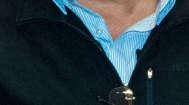



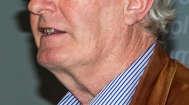
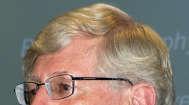





 Melanie Chalk
Melanie Chalk
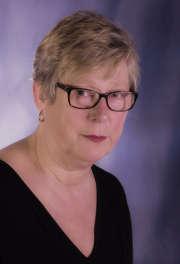
The idea for Just Dance formed after viewing and processing a huge �le of images, 1400, taken at a Creative Dance Workshop. This workshop provided beautiful young dancers, moving slowly and gracefully across the backdrop trailing gauzy materials and ribbons. When processing the photographs, I could visualise them �oating dreamily across the screen, and an AV idea was germinating. Originally called Ballet, with thousands of �oaty images in a folder, I revisited other images taken at a Sync Lighting Dance workshop and thought I could combine the two.
My way of approaching a new project is to get the soundtrack sorted. I settled on two pieces by Debussy. These tracks weren’t speci�cally composed for ballet, but ful�lled my brief of being slow and dreamy and would make a good background for my images and voice over. I went in search of an orchestra tuning up, as my opening track. Then I went searching for poetry, to be slotted in between the music tracks. I have the sound track in place before I even think about the images in a de�nite way.
I continually try images, making minuscule adjustments, taking them back into Photoshop, adding, taking away, trying different blends until I am happy. The more formal images of the ballet dancer, taken at the RPS Workshop were overlaid with low opacity gauzy materials, sometimes in Photoshop or directly in PTE. Others were cut out and added to other images, even a lovely pink dahlia!













Just Dance: Behind the Scenes continued ...


My style is for subtle use of movement, and an attempt to create atmosphere for the viewer. I use ‘Objects and Animation’ for all my images and the ‘Key frame’ points are then plotted along the timeline, introducing other elements at varying opacities. In ‘Pan and Zoom’ I use ‘Slow Down’ to give my required smoothness, also enlarging some images and moving them slowly across the screen. I used portions of the blurred materials of the dancers over the top of many of the images to soften and also to change the colour tones and introduce another group of dancers, and to try to complete a seamless transition. There were 33 single images used along the timeline with a few more added as overlays.



I try to use symbolism or a suggestion of an image to tell my story rather than being too obvious. I wanted to show the curtains parting and rather than using an image of curtains, I eventually settled on the transition 'Gates' to give the effect of them opening.

This is how I work and how I have developed my style. For some it would seem my photography is not the strongest element and even sometimes not shown on the screen for long enough to be enjoyed fully but I believe that an Audio Visual is the combination of the three parts, music, voice and images. My aim is to create mood, add atmosphere and evoke some emotion in the viewer and be, just that bit different. Sometimes I am successful with the judges, sometimes with the audience, but ultimately, I myself am content with the endeavour, enjoy the creativity, and relish the research and quest for suitable music. My thousands of images are being utilised and I am learning processing skills along the way; satisfying but very time consuming.

The Northern Audio-Visual Group, https://thenorthernavgroup.co.uk, has just two events a year, one in March and one in October. Our mission is to provide an opportunity for AV workers from the whole of the North to meet for a day to see Attendees Sequences, to hear well respected speakers and to have an excellent lunch in good company. As a further and very useful addition to our day, we invite well known AV workers from other regions to provide recorded constructive comments on our attendees’ sequences.
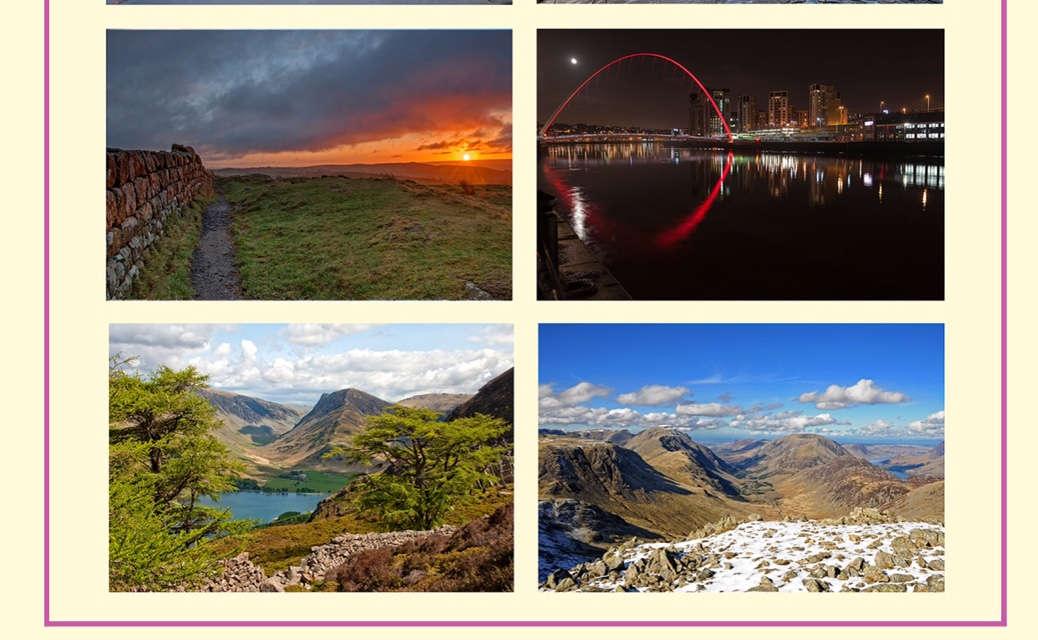

We were fortunate to persuade Malcolm Imhoff, FRPS FAIC(M) to make the journey north to be our guest speaker, whilst Jill Bunting and John Smith had found time to examine all twelve Attendees Sequences very carefully and to record their comments and thought-provoking suggestions in their own clearly recognisable style.
Malcolm chose to centre his presentation around “Sound in AV.” It is always dif�cult, with a relatively unknown audience of mixed experiences and abilities, to know quite where to pitch the talk but Malcolm included something for everyone along with examples of his own AVs.
Malcolm had brought some of his own microphones and recording devices with an invitation, accepted by many, to handle and examine these closely. He raised awareness of a site called Fiverr, where those not happy with their own voice for “Voice Over” can purchase a recording made by specialists in that �eld. We learned of more complicated techniques whereby “Audition” can be used to shorten or lengthen music so unobtrusively that the most listeners will have no idea that any changes have been made.
A very useful tip was always to use WAV �les to process music for the same reason that RAW �les are used to process photographs. Yet another was to record tracks in stereo and then use “Audition” to remove the seemingly empty track because therein lies unwanted noise.
For helpful advice (most particularly from the East Midlands AV Group) visit ( https://www.emavg.org.uk and then go to AV Guides and Tutorials to �nd illustrations and examples.
Malcolm showed several of his sequences that many of the audience had not seen before. Sunrise on Helvellyn showed that, used in the right place, a wellknown piece of music can be the perfect accompaniment. By contrast, Faces of Nepal, showed the value of acquiring music from the actual area. Ambient sound and some video were included in Friends across the Bay a visual account of the walk across Morecambe Bay, from Arnside to Kents Bank.
The �nal AV of his presentation was Love will Remain, his moving tribute to Maggie which resonated in a very personal way with more than one member of the audience.
The keen-eyed reader will have seen the point of this article, a thorny problem for AV workers. Occasionally we see pictures which are not as sharp as they could be. It could be the result of "camera shake", inaccurate focusing, or sometimes be where images have been used straight from the camera. This is not to be recommended as I explained in Hints and Tips 16 in AV News Issue 214.
Perhaps more common is the opposite effect, over-sharpening. This is often seen in photographs of foliage or textured surfaces such as brick walls, where the overall picture has what I describe as a "gritty" quality. It is also very common in photographs containing elements against a plain sky, such as roo�ines or mountain crests, where it manifests itself as a white "halo".
These problems may not be obvious on a small computer monitor, but when shown on a big screen at an AV festival or competition and shortcomings will be magni�ed.
I work with RAW images and I �nd that every single picture needs to be looked at, adjusted and, as the very last stage in the process, given a small amount of sharpening. I do not use the sharpening controls in Photoshop as in my version they seem pretty crude. Maybe I'm not using them correctly and maybe Keith Scott could be persuaded to do a feature on how to do it in his Masterclass.
For some years now I have used a separate application for sharpening called Focal Blade. This is available as a plugin or smart �lter for Photoshop and forms one of the resources in the "Photowiz" suite of Plugins available from (https://thepluginsite.com/products/photowiz/focalblade/index.htm).
The complete suite is $99.95 while Focal Blade only is $49.95. It is one of the best bits of software I have ever bought, comes with free upgrades, and the Plugin Site is also a treasure trove of other resources, many of them free.
This is a powerful application but you can use it in various modes, as simple or as complex as you wish. The things I like about it are that you can sharpen the edges separately from the surfaces, and quite often I only sharpen the edges. You can quickly switch between "Display" and "Print" modes where for print output the degree of sharpening and the radius are increased. I almost always stick to "Display" mode.
The effects of every adjustment can be seen on the customisable Preview Screen so you can see the result before and after. And if unwanted halos do appear you can use the "Fix" controls to get rid of them while maintaining the desired amount of sharpness. Turn over to see how to use the Focal Blade Plugin.
The PhotoWiz Collection offers tools for correcting, enhancing and restoring digital images. With it even beginners are capable of achieving expert results. It is available for Windows as well as MacOS.
It contains seven plugins for Photoshop, Photoshop Elements, PaintShop Pro, Af�nity Photo and many other applications. Under Windows you also get six external editors for Lightroom, AfterShot Pro, ACDSee etc. as well as six standalone applications. In addition to the seven commercial products there is also an 8th free plugin package called PhotoFreebies.


In Fig.1 I have created an action to make a new layer called "Sharpen", so my background layer remains intact.



Fig.2 shows the Focal Blade interface where I have applied a small amount of sharpening, mainly to the edges, in "Display" mode.

Fig.3 shows the effect of using too much sharpening in "Print" mode, and the awful white haloes along the skyline.




In
I have used the
to get rid of the white halo while keeping the increased sharpness in the rocks.




Very rarely would I use a piece of music "as is". I suspect that when a lot of people, even judges, hear my soundtracks they believe I have used a single piece of music straight off a CD. That to me seems to be a measure of success. If you were aware of the "joins" it would not have worked.
In the next few articles in the series we'll have a look at some of the basic techniques in editing music.


Rule number 1, always use a WAV �le for editing. WAV �les are a "lossless" format and so can be edited and resaved without loss of quality.

MP3 �les on the other hand are a "lossy" format and information is discarded when compressed and saved. If all you have is an MP3 �le, downloaded from the internet from Amazon Music, i-Tunes etc., the �rst thing you should do is immediately save it as a WAV �le for all subsequent editing.
The next thing to do is examine it. Fig.1 (below left) shows an MP3 �le. It's obviously very loud, you can see the classic "clipped hedge" shape, all the peaks are bang up against the edges of the window, and the level meter is already in the "red". This sound will certainly be distorted and I would not use it.
OK, let's say we have a suitable piece of music at reasonable quality but it's too long. We need to shorten it. Do not be tempted to fade the music out before the end. This almost never feels right, and gives a bad impression. Of course your piece of recorded music might already feature a de�nite fade out ending, such as in The Beatles' "Let it Be". In a case like this you might want to make a feature of it with matching images and transitions and maybe even make the fade curve a little steeper. With "Let it Be" you could end it anywhere to suit the length you want. But it's usually much better to use the start of a piece of music and the end, and cut a bit out of the middle. Here's how to do it.
In this example, "Farewell to Stromness" there is a section in the middle which "pithers" to use Maggie's phrase, in other words it meanders aimlessly (apologies to Maxwell Davies). In my AV I wanted to get rid of this section and make the whole thing shorter, but still �ow seamlessly.





Fig.2 (above) shows the Session �le in Audition. The top green track is the complete waveform. The section between the yellow arrows is the bit we want to remove. What I have done is select and copy the part of the original waveform between the red bars, and paste it to a new Track 2 below, coloured blue. I have then slid the copy to the left. The trick is to align Tracks 1 and 2 so you can cross-fade from one to the other.

Shortening a Piece of Music continued ...
Fig.3 shows a close-up of the point where this cross-fade occurs. Track 1 is faded down to zero while Track 2 is faded up. I have done it by listening and matching a phrase in the music and positioning a note in Track 1 with the same note in Track 2, so that when it is played back you will not hear the join.
The last step is to mix down the tracks to a single stereo waveform (Fig.3) of the required length. It then only remains to remove the unwanted silence after the music ends and save it as a new WAV �le. The 5 minute piece has been reduced to 3' 21".




Although you’re probably reading this in the May 2019 edition of AV News this article was written during October 2018, immediately after Adobe released their Photoshop update to version 20 i.e. Photoshop 2019. Why the long delay you may wonder? The delay is because I sometimes write articles many months in advance of their publication date, occasionally up to nine months in advance. This is done to help our Editor plan space and magazine layout, consequently he was already in receipt of Photoshop articles for the November 2018 and February 2019 issues before Adobe announced this update. For many years Adobe Photoshop has been the industry standard photographic editing software, simply because it’s so comprehensive with its powerful features and functions, no other software quite equals it.
Certainly, there is a multitude of other image editing software available including Photoshop’s smaller brother `Photoshop Elements’. Such software ranges from free to expensive and some are actually very good, but none can quite match the overall functionality and �exibility of Photoshop. With each new release I’m always astounded that Adobe manage to add or improve functions to this already powerful software. It is reassuring to know that Adobe Corporation listen to and act wherever possible to develop suggestions submitted by its many users.
One of the �rst noticeable changes to this update is the new ‘Home Screen’.

When launching Photoshop 2019 for the �rst time this new and rather dark screen springs into view, offering various options (see page 43). At the left side �ve options are available. From the top these are; `Home’, `Learn’, `LR Photos’, ` Create New’, and `Open’. By the nature of their titles these are selfdescriptive perhaps with exception of `LR Photos’, clicking this option takes you to your Lightroom images stored on the `Cloud’, always assuming of course that you have images on the `Cloud’. In the centre there is an option to `Take the Tour’, which as you might expect takes you on an informative tour of Photoshop’s new features. Below this is an option button to `check out online what’s new in your web browser’, again this is self-explanatory. Towards the bottom right is a sensitive rectangle where you can simply and conveniently drag and drop an image to start editing without the need to open an image from within your workspace.
Some users may �nd this new Home page useful, but it can be turned off in the preferences if like me you �nd this new Home page irritating and prefer the traditional opening of Photoshop. To turn off click on `Edit’ then `Preferences’ (Ctrl+K) then on the `General tab’ place a tick in the small square indicated by the red arrow on the left adjacent image. Thereafter each time Photoshop opens it will default to your usual workspace setting i.e. Essentials, 3D, Graphic & Web, Motion, Painting or Photography.

Your work space can be changed to whatever mode suits your preferred work�ow by clicking on the drop-down menu next to the spyglass icon at the top right corner of the workspace, mine is normally set to Photography.
For those using blending modes an interesting and most useful new feature is the `live preview’ of blending modes and their effects. Simply by clicking on the blending mode drop down menu within the Layers Palette, (this is usually set to normal) then by moving your mouse or pen up and down the various blending mode titles an instantaneous pre-view is shown on your image without �rst having to commit any change.

This makes choosing the correct blend mode very quick and simple. Blending modes are powerful tools that can be used to create or change image properties, they can also be used in conjunction with other effects including `High Pass Filter’ `Calculations’ and `Apply Image’.
Blending modes as a subject could easily form the basis of a future Photoshop article.
The `Text Tool’ has also received a major update, now when clicking on the document to start typing an automatic `Lorem Ipsum’ is inserted. This is a small piece of dummy text indicating the style and size of font currently selected. In publishing circles Lorem Ipsum is a placeholder text commonly used to demonstrate the visual form without relying on meaningful content. This dummy text can of course be fully edited to suit your requirements i.e. font, size, attributes, colour etc.
Although Content Aware Fill has been with us for some time Photoshop version 20 (2019) includes a completely new and far more controllable Content Aware Fill tool. The old version of content aware �ll is still available for those that wish to use it (Shift+F5) then choose content aware �ll from the options box drop down menu. However, the new Content Aware Fill has its own listing on the Edit Menu. As shipped, it does not have its own shortcut key, but a shortcut can be easily created if required.
To create your own shortcut key, select ‘Keyboard Shortcuts’ from the Edit menu (Alt+Shift+Ctrl+K) then in the preferences box choose and expand ‘Edit’, then scroll down until Content Aware Fill is shown on the list. Select this line by clicking with your mouse, whereupon a small white box will appear for you to enter your chosen shortcut. Ensure to use a con�guration of keys not already allocated to another function.

If you enter something already in use Photoshop will instantly give you a warning message to this effect. May I suggest (Ctrl+*) this works and is not already allocated. After adding your shortcut, you need to click on the `Accept’ button towards the top right indicated above by the top arrow.

The image (above) showing a farmer herding his cows back to the farm for milking, was taken near Gillside just above Glenridding in the Lake District. It includes two unwanted distractions, a tourist’s silver car on the right and an unsightly wooden structure on the left edge. This image could be improved without such distractions and it is here that the new Content Aware Fill comes into its own, especially as the older version could not adequately handle the area occupied by the car, although it handled the wood structure perfectly.
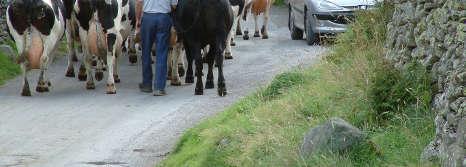


The new Content Aware Fill has a completely different workspace offering both work and preview windows indicating the effect of adding or removing a green mask using the brush tool. The mask is initially applied by Photoshop automatically, then areas are brushed away to suit. This mask is used to select or deselect areas to be used as reference data for the �ll.

By choosing different masked areas the various effect can be seen in the preview window (Centre) before committing, thereby providing opportunities to edit the mask as required to achieve the most appropriate �ll.
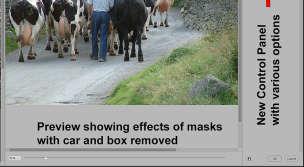
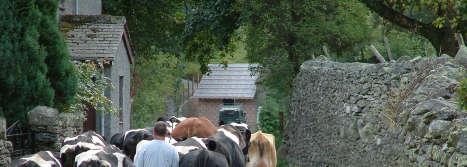
Note that the Content Aware Fill on the `Edit’ menu will be greyed out until an area to be �lled is selected. I normally use the Lasso tool for this purpose because it allows a close selection around uneven shaped objects. In the control panel at the top right side select `Output to New Layer’, this will leave the original image layer untouched.
This maintains the concept of non-destructive editing and it also allows for the �lled area to have other subtle edits applied without affecting the original image i.e. colour, density, contrast, saturation, sharpness etc. (See right hand image below )
Version 20 (2019) of Photoshop also has many other improved functions which may be the subject of future articles in AV News.

May 2019
17 - 18 May
PAGB APM for AV Wilmslow Guild, Wilmslow, Cheshire
Contact: pagb-av@gnfestival.org.uk
25 May
RPS Multi Media Advisory Day
Smethwick PS Clubrooms, Oldbury, West Midlands B69 2AS
Contact : howard,bagshaw@ntlworld.com
June 2019
1 June Trophee de Paris
Contact: trophee.paris@orange.fr
6 - 8 June
7th Garda International

Jury: Howard Bagshaw, Lorenzo de Francesco, Fulvio Merlak
Contact: garda2013@gmail.com
9 June
North Wales & Wirral AV Group Challenge321 Judging
Contact: Marion Waine
NWAWAVG@chasingthelight.co.uk
5 - 6 October RPS National AV Competition Leeds Trinity University
29 November to 1 December Great Northern AV Festival
Hough End Centre, Mauldeth Road West, Chorlton, Manchester Contact: info@gnfestival.org.uk
16 December AV Makers South Africa

Themed Competition - Celebration
Contact: Jeff Morris avmakerssouthafrica@gmail.com

AV News is published quarterly by the AV Group of the Royal Photographic Society. It is distributed free to Group members and is available to others for an Annual Subscription of £22 in the UK, £25 in Europe and £27 elsewhere – contact David Neal at: davidneal@talktalk.net
Copy Deadlines
27th September
27th December
27th March
27th June
Publication Dates
1st November
1st February
1st May
1st August
Please note that the copy deadlines are the absolute latest. To ensure publication in the next issue please send copy as early as possible.
Any items concerning Audio Visual and Multimedia are welcome, including reviews, technical details, events, photographs, letters and queries. All contributions should be submitted to the Editors at: magazine@avnews.org.uk

The views expressed are solely those of the contributor and not necessarily those of either the Editors or the RPS AV Group.
Distribution: AV News is forwarded to RPS AV Group members using the labels produced by the RPS Membership Department in Bath. Any member not receiving their copy should contact Bath. However, the Secretary will be pleased to post single copies to those members who have failed to receive them.
Copyright: All rights reserved. No part of this publication may be reproduced, stored in a retrieval system or transmitted in any form or by any means without prior permission of the copyright holder.
Printed By Mensa Printers, Arundel Lane, Shef�eld. S1 4RF
